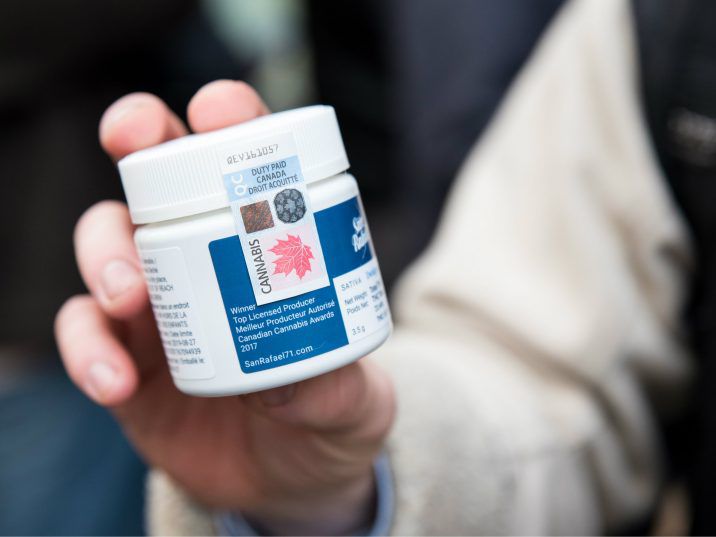Is hemp the future of cannabis packaging?

The cannabis industry has a packaging problem.
Hemmed in by regulations, the Canadian industry has created thousands of tons of needless plastic pollution over the last two years, and consumers have noticed. A quick search of social media will reveal some common complaints, including that shipping one-gram orders of cannabis in thick plastic containers might not be the best approach.
Under Health Canada’s regulations, packaging needs to be child-resistant, prevent contamination and ensure that the product is kept dry.
According to Plastics Engineering, one packaging solution could be grown right alongside the bud.
Hemp.
Cannabis packaging is more complicated than it might seem. It needs to retain moisture, while also keeping moisture out, and the product could end up sitting on a shelf for months before a customer opens it up.
Too wet and the bud could get mouldy; too dry and it could arrive underweight, brittle and with diluted potency. There’s also the issue of odour, as well as protecting the bud from light and static, which can further damage the product.
Creating the needed “barrier protection” can reduce the package’s recyclability or compostability, according to Plastics Engineering.
Earlier this year, speaking at the Plastics in Cannabis Packaging conference, Ron Kander, founding dean of the Kanbar College of Design, Engineering and Commerce at Thomas Jefferson University in Philadelphia, said hemp has the potential to be a sustainable raw material with nearly endless industry applications. But converting hemp into plastic is not easy.
“As it sits in the ground as a mature plant, it is carbon negative — it sequesters more carbon than it takes to grow. So, the question, as engineers and scientists, is how much energy is needed to transform that plant as it comes out of the ground into a useful product, without negating that benefit of being carbon negative initially,” Kander said. “That’s the systems problem we’re trying to solve.”
Some companies, such as Sana Packaging, are already working with hemp, but James Eichner, chief scientific officer and co-founder of the company, told Benzinga earlier this year that the hemp industry is limited by a lack of infrastructure.
“The hemp industry is definitely growing and becoming a lot larger year by year. But in the grand scheme of things, it’s still a really small industry with very limited infrastructure,” Eichner said.
Harvesting hemp is also labour-intensive, and growing the crop requires significant amounts of water, reports Ministry of Hemp.
Still, when stacked up against traditional plastics, the potential of hemp is unmistakable. While most plastic takes a thousand years to decompose, hemp bioplastics are completely decomposed within six months, reports Cannabis Industry Journal.
Speaking at the Plastics in Cannabis Packaging conference, Kander said there remains a need “to develop a better basic understanding of the hemp plant, not as an agricultural product, but as a raw material.”
In the meantime, consumers can drop off their used cannabis materials at any Tweed or Tweed-partnered retail store to be recycled. In 2018, TerraCycle partnered with Canopy Growth on a national recycling program, which now operates two streams: one recycling program for packaging and related materials, like joint tubes and plastic bottles, and another for disposable vape cartridges and batteries.
420 Intel is Your Source for Marijuana News
420 Intel Canada is your leading news source for the Canadian cannabis industry. Get the latest updates on Canadian cannabis stocks and developments on how Canada continues to be a major player in the worldwide recreational and medical cannabis industry.
420 Intel Canada is the Canadian Industry news outlet that will keep you updated on how these Canadian developments in recreational and medical marijuana will impact the country and the world. Our commitment is to bring you the most important cannabis news stories from across Canada every day of the week.
Marijuana industry news is a constant endeavor with new developments each day. For marijuana news across the True North, 420 Intel Canada promises to bring you quality, Canadian, cannabis industry news.
You can get 420 Intel news delivered directly to your inbox by signing up for our daily marijuana news, ensuring you’re always kept up to date on the ever-changing cannabis industry. To stay even better informed about marijuana legalization news follow us on Twitter, Facebook and LinkedIn.




